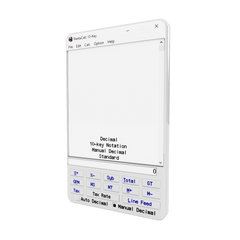From the Napier’s bones used for abacus calculations to the Curta calculator right to the 10 key electronic calculator we have nowadays, there has been a worthwhile evolution of calculators over the years.
It is of a truth that the human race has employed more that enough ways to solve mathematical problem right from the early centuries and it will be very hard to put a stick on the foremost means employed to perform mental arithmetic. But from major sources and archeological assertions, it can be said that counting using the fingers and the toes was the earliest relatable means before there was import to that approach.
The said improvement can be likened to the beginning of the prehistoric agriculture, commerce and astronomy where the counting of stones became irrelevant and hopeless. Not quite long to this period there was a rudimentary version that was implemented using another means different from the previous ways. This version was dated as far back as the 2500BC. It was traced to the then Sumeria which is the presently named country Iraq. It was this medium that gave birth to the abacus century. However, as the abacus period seem to get by, calculations that have been labeled as a difficult task became easier with the refined abacus procedure.
For more than 3 centuries, the abacus line was the most prominent tool of calculation, it was mainly employed to count. It reigned and stay for this long while till the invention NY pascal brought a valid end to the abacus age. But just before then some scholars have been able to find ways to get complex calculations done with thr abacus line. And even till the 17the century, a sustainable was no such feat any man can dare compete in. The experts only got their way to make the solid difference.
Although the means used before the period Pascal got it right cannot be deemed to be a calculator but it worked to simplify the sums a human operator can perform.
And them in 1642, a French man named Blaise Pascal invented his pascal calculator, it was a a device truly capable of performing mathematical calculations by means of a clockwork-type mechanism.
The Pascal calculator was ingenious, attempting arithmetic functions previously thought impossible, but they were difficult to produce and only a handful were ever made. Even then the abacus was still in use in accountants’ offices until the mid-19th century, when Thomas de Colmar invented and produced the first mechanical calculator robust enough for everyday use. The invention arose an high bunch of proliferation of calculating machines that could add, subtract, multiply and divide large numbers rapidly and accurately. Their biggest disadvantage was their size: they often filled a desktop and weighed 15 kilograms or more.
And from then till the invention made by Curt Herzstark even though his plans was disturbed from being achieved. He later on created a portable calculating machine that is worthy of a lesser space in the 20th century.
Since then, there have been lots of innovation that had brought the 10 digit calculator to the digital ones on smartphones.

















